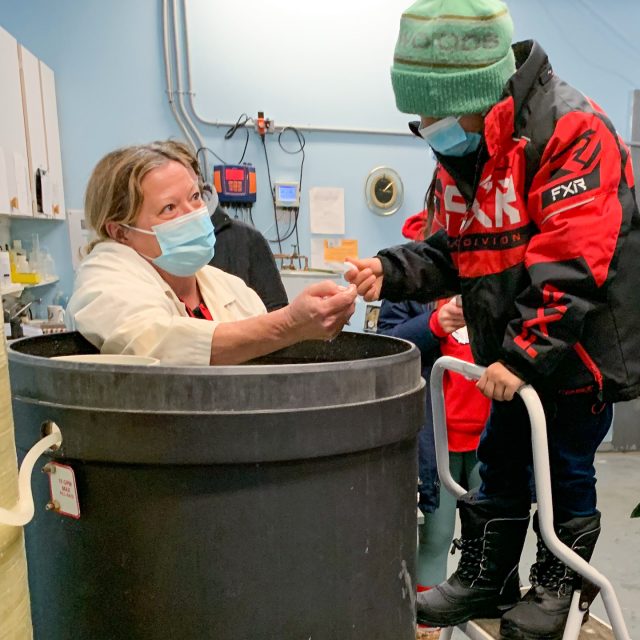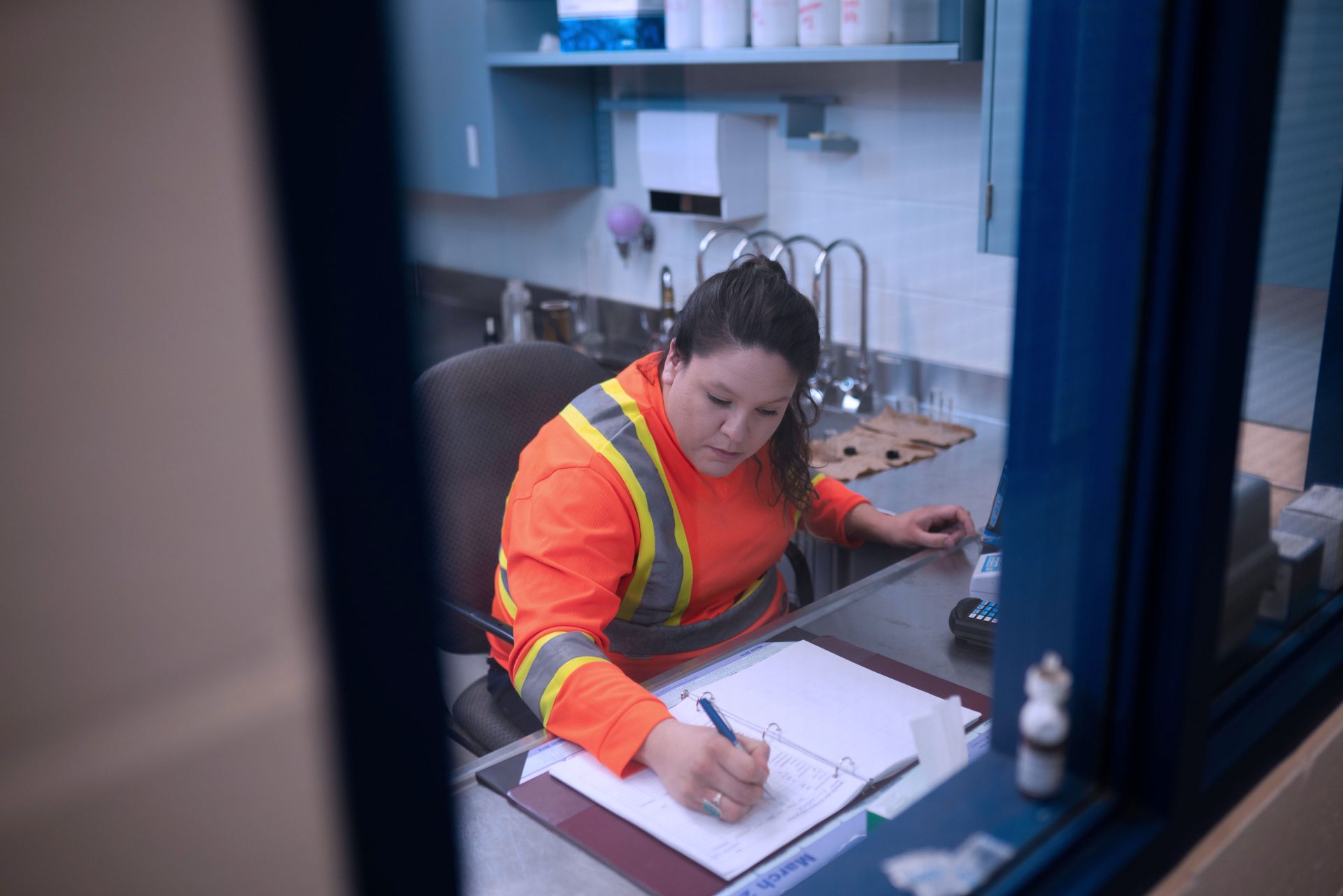

The long-term vision of our Indigenous Schools Water Program is to provide opportunities for Indigenous school-aged students to see a future for themselves in the water sciences. By seeing community members working to provide clean water, students deepen their connections to the content in the workshops, and can even see themselves in a similar position someday.
So, when Louise, Kennedy, and Harmony then also visited the classroom to share their personal experiences with the kids about what they are doing at the water treatment plant and why it’s important, that’s exactly what happened! The younger kids thought of Louise as a “Water Doctor” and expressed a desire to “be water scientists” when they grew up.
One of our educators, Adrianna Bilinkski, explained, “At the water treatment plant many of the students knew Louise, and her face lit up to see them and their excitement to learn about her work. There were many hugs given, and one student exclaimed to Louise ‘I didn’t know you were a scientist!’ and proceeded to say, ‘I want to be a scientist when I get older’.”
On the final day, Veronica Dokis shared some of Dokis’ history with the students. Reaching back to where the people lived in 1850 with the signing of the Robinson-Huron treaty. She explained that the people used large canoes to travel the lakes and river when the water was open, and horse-drawn sleds when the water was frozen over. She encouraged them to go home and ask their grandparents or others in the community about these times because they actually lived it; they remember how vital the water was to the people.
Learn more about the Indigenous Schools Water Program here.


